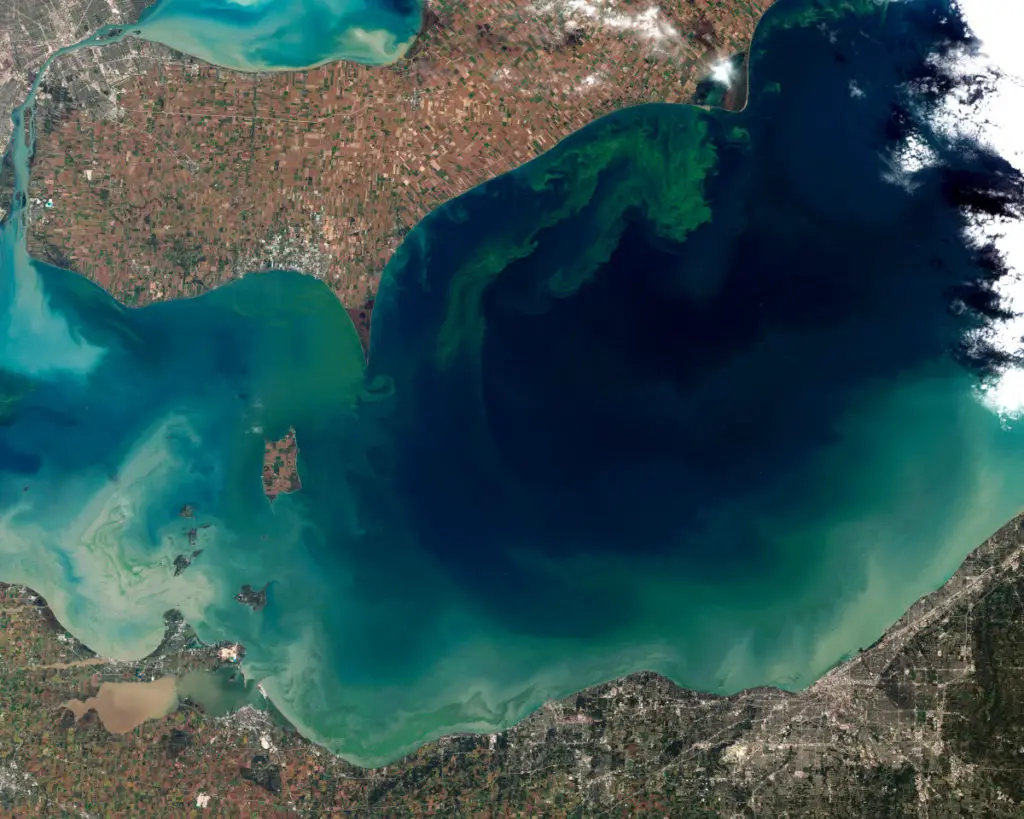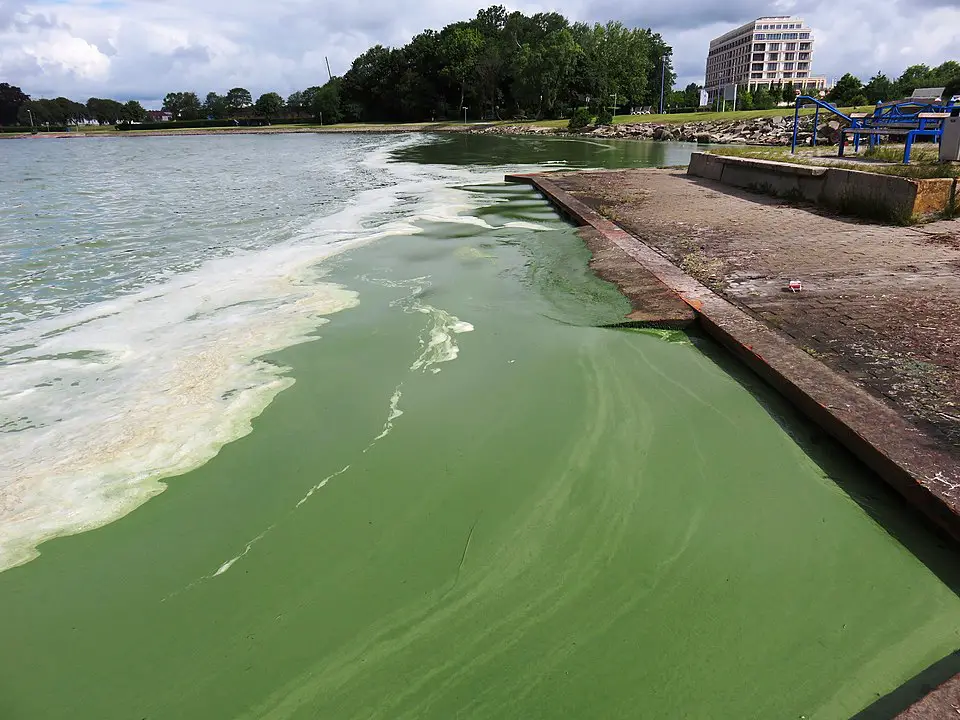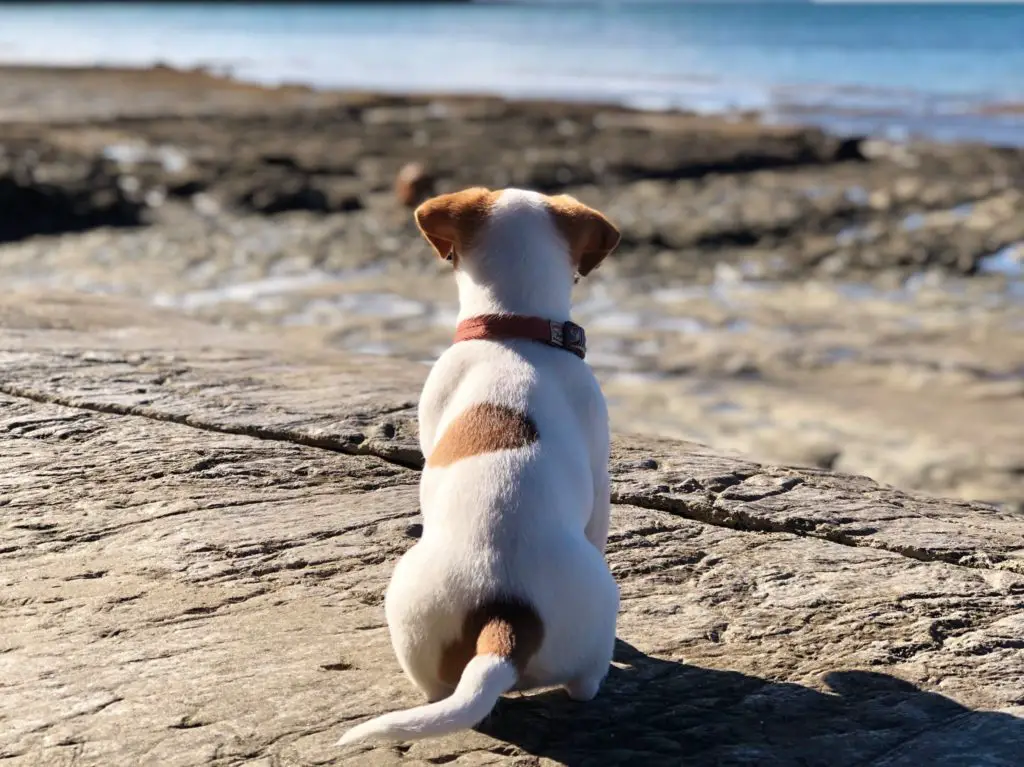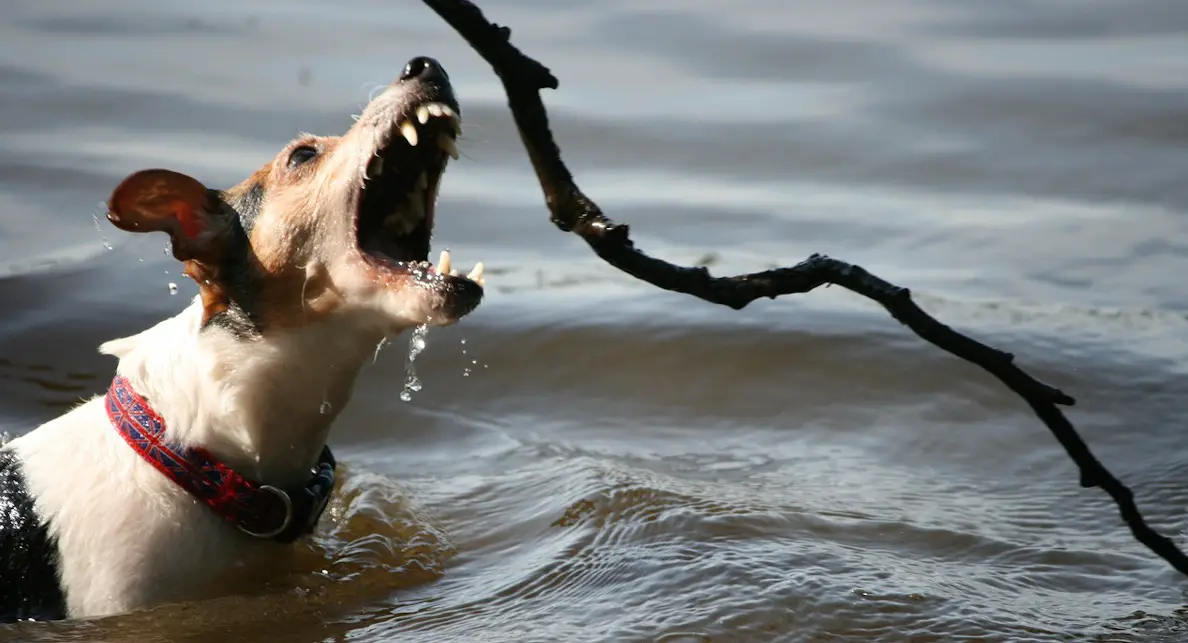Table of Contents
*This post may contain affiliate links. As an Amazon Associate we earn from qualifying purchases.
If you and your dog love the great outdoors, you’ve probably heard about recent blooms of toxic blue green algae. But what is it, exactly? Why is it so bad?
More importantly, if you have a water-loving pup, how can you avoid it? And what can you do if you think you or your dog has been exposed?
What is Toxic Blue Green Algae?
We’re all familiar with the sight of algae: green or brown slimy plant matter that floats on top of still or slow-moving water. We’re used to ignoring it. As kids, you might even have played with it. But nowadays we need to be more cautious than that.
Most types of algae aren’t poisonous. In fact, most algae is beneficial. It provides food for aquatic animals, and is a vital part of the food chain.

Under certain conditions, however, some kinds of algae can produce toxins. These toxins can harm sea and river life, as well as people and animals who drink or play in the water. You can also breathe them in if you’re standing close to the water. Finally, it can poison the fish and seafood that we eat, and harm people that way.
Toxic blue green algae, or Cyanobacteria, is one of the harmful kind. And it’s causing problems for people and pet owners around the world.
Why It’s so Bad
Toxic blue green algae poisoning happens very quickly. According to veterinarian and toxicologist Dr. Justine Lee, many dogs even succumb to the poison before they get to the vet. Lee says all it takes are a couple of licks for your dog to ingest a potentially fatal dose of Cyanobacteria.
Cyanobacteria produces two different kinds of toxins: microcystin and anatoxin. Both of these will produce different symptoms, but they’re equally harmful — harmful for people, as well as animals.
And if that’s not bad enough, there’s no antidote for either one.
Problems most often occur when dogs drink affected water. However, they may also be poisoned if they play in the water and lick themselves clean afterward. And both people and dogs can breathe in the toxins, even if they don’t go into the water. And the toxins can be absorbed through the skin as well.
What Causes Toxic Blue Green Algae?
Toxic blue green algae can be found in bodies of water in all 50 states, and around the world. It grows in slow-moving and still water.
Sunlight, warm temperatures, and increases in nitrogen and phosphorus in the water can cause algal blooms. Toxic blue green algae is just one kind of harmful bloom. You might also have heard of red tides, for example.

As temperatures increase worldwide, we’ve seen an increase in blooms. Nutrient pollution is another cause. Fertilizers, soaps, human and animal waste, and the by-products of fossil fuel usage are major sources of the excess nitrogen and phosphorous that cause harmful algae blooms.
How You Can Avoid Problems
Bad news if you have a water-loving Jack. The best way to avoid problems with toxic blue-green algae is to avoid ponds, lakes, streams and slow-moving rivers where algae tends to grow.
What does it look like? Most often algae looks like a green or brown scum floating on the surface. If you see algae growing on the surface of the water, stay away.

If you can’t stay away from the water, inspect it carefully for even a small amount of algae. Dr. Lee also recommends stomping around in the water yourself before letting your dog go in.
Also, keep an eye on your own property. Are there any places or containers that tend to gather water? This includes tanks and pet and livestock water dishes. Empty sitting water regularly, and keep water dishes clean.
Symptoms of Exposure
How can you tell if your dog has been exposed to Cyanobacteria? It depends on whether they’ve been exposed to microcystin or anatoxin. Either way, if you suspect exposure, it’s important to get to your vet immediately.
Microcystin exposure
Your dog may come into contact with microcystins created by Cyanobacteria by ingesting them, breathing them in, or absorbing them through their skin.
Symptoms of microcystin exposure include, but may not be limited to:
- Loss of appetite
- Weakness or lack of energy
- Vomiting
- Diarrhea
- Loose black stool
- Gums that are pale or yellowish
- Collapse
- Siezures or shock
Microcystins can affect humans, too. If you have been exposed, you might experience:
- Blisters or rash in your mouth (if ingested)
- GI symptoms (abdominal pain, diarrhea, vomiting)
- Headache
- Sore throat
- Dry cough
- Pneumonia
Anatoxin exposure
Conversely, toxic blue green algae may produce anatoxins. Symptoms that your dog has been exposed to anatoxins include:
- Runny eyes and tearing
- Drooling
- Blue gums
- Muscle rigidity and tremors
- Inability to walk
- Difficulty breathing
If your dog experiences any of these symptoms after going into or near a body of water that may contain toxic blue green algae, it’s important to get them to a vet immediately.
When in doubt, you can always call the ASPCA’s Animal Poison Control Center at 888-426-4435.
Be Water Safe!

Algae blooms can happen in salt water or fresh, and in rivers, lakes, ponds, and streams. They occur all over the world, but are particularly common in coastal areas where the water is warm, such as the American Gulf Coast.
Different conditions cause blooms, including: nutrient pollution, increased water temperature, and sunlight. Algae needs a specific set of temperatures and conditions to bloom, and the blooms will die off when those conditions no longer exist.
You can check the NOAA website for algae bloom forecasts in your area. You can also sign up to receive bulletins from the NOAA here. Keep your eyes open for local algae warnings, and heed them.
Stay vigilant
But the best way to stay safe is to stay observant
The CDC recommends avoiding any water that smells bad or has visible algae, scum or foam on top. Also, don’t go into any water if you see dead animals or fish in it or nearby.
If your pets go in the water, rinse them off with tap water afterward, and don’t let them lick themselves until you’ve done so.
And if you’re getting out the kiddie pool for your dog to have a splash, use water from your hose, not from a river or the ocean.
Featured Image: Pixabay License by Angela Anaconda via Pixabay

